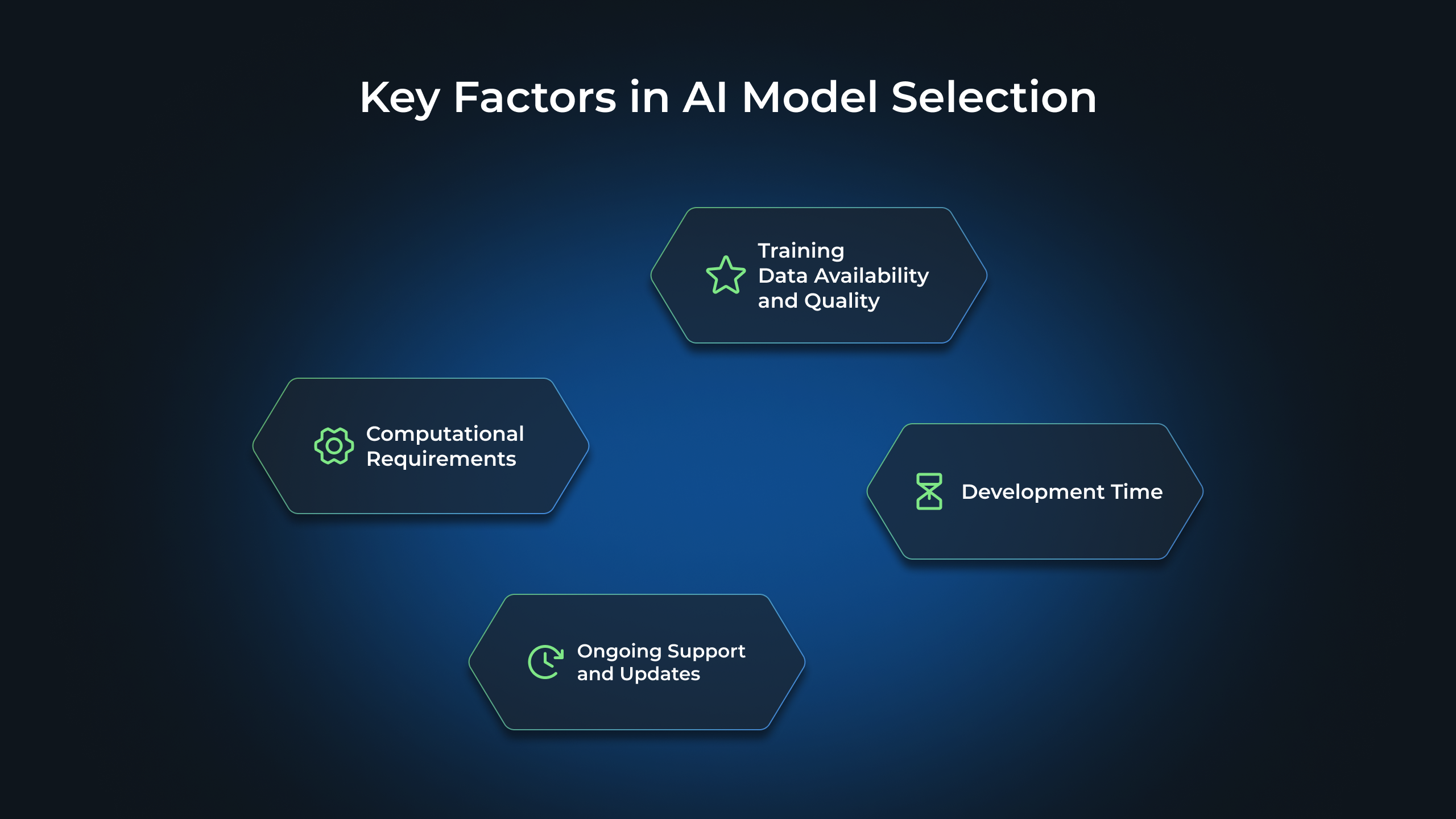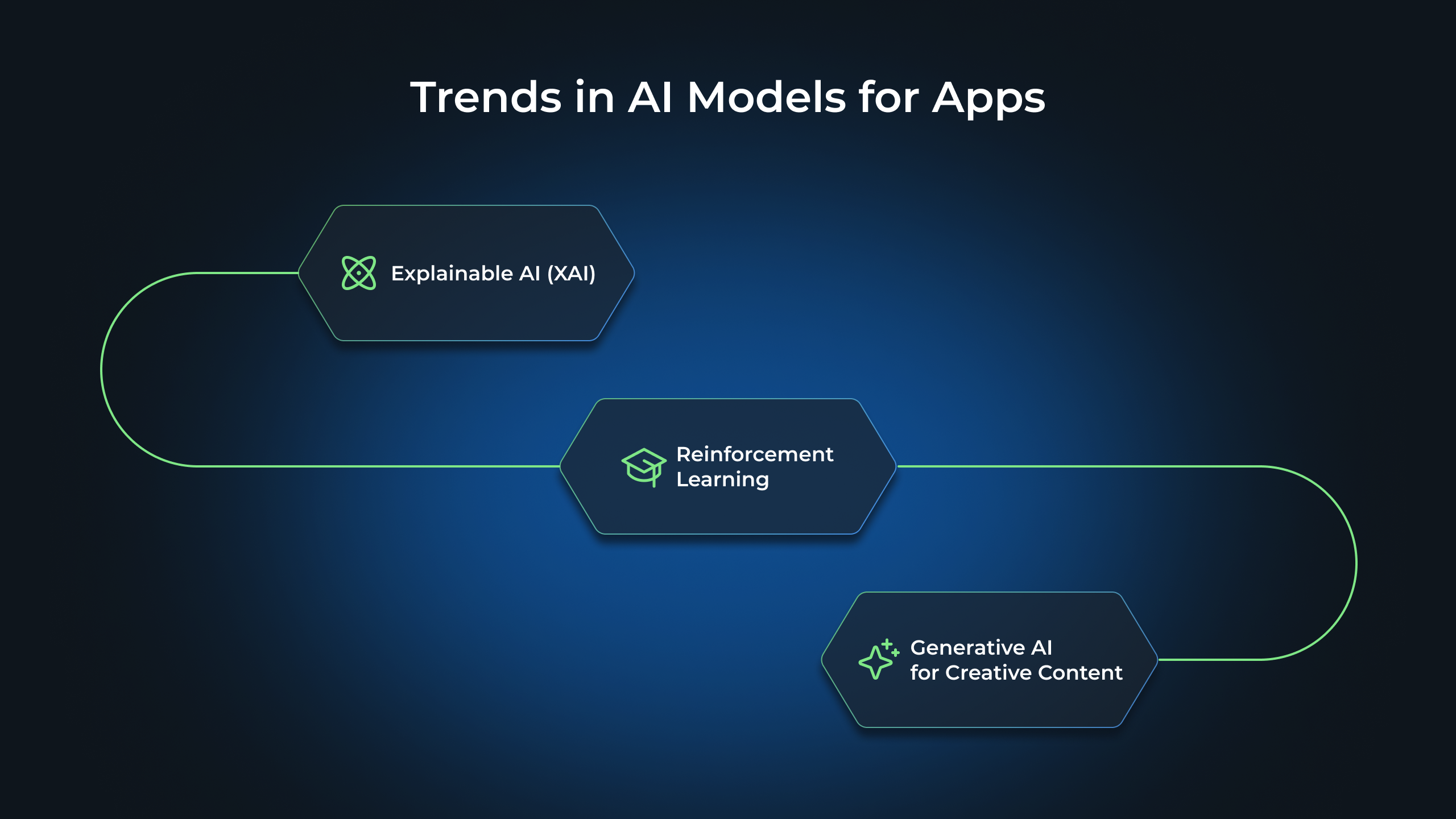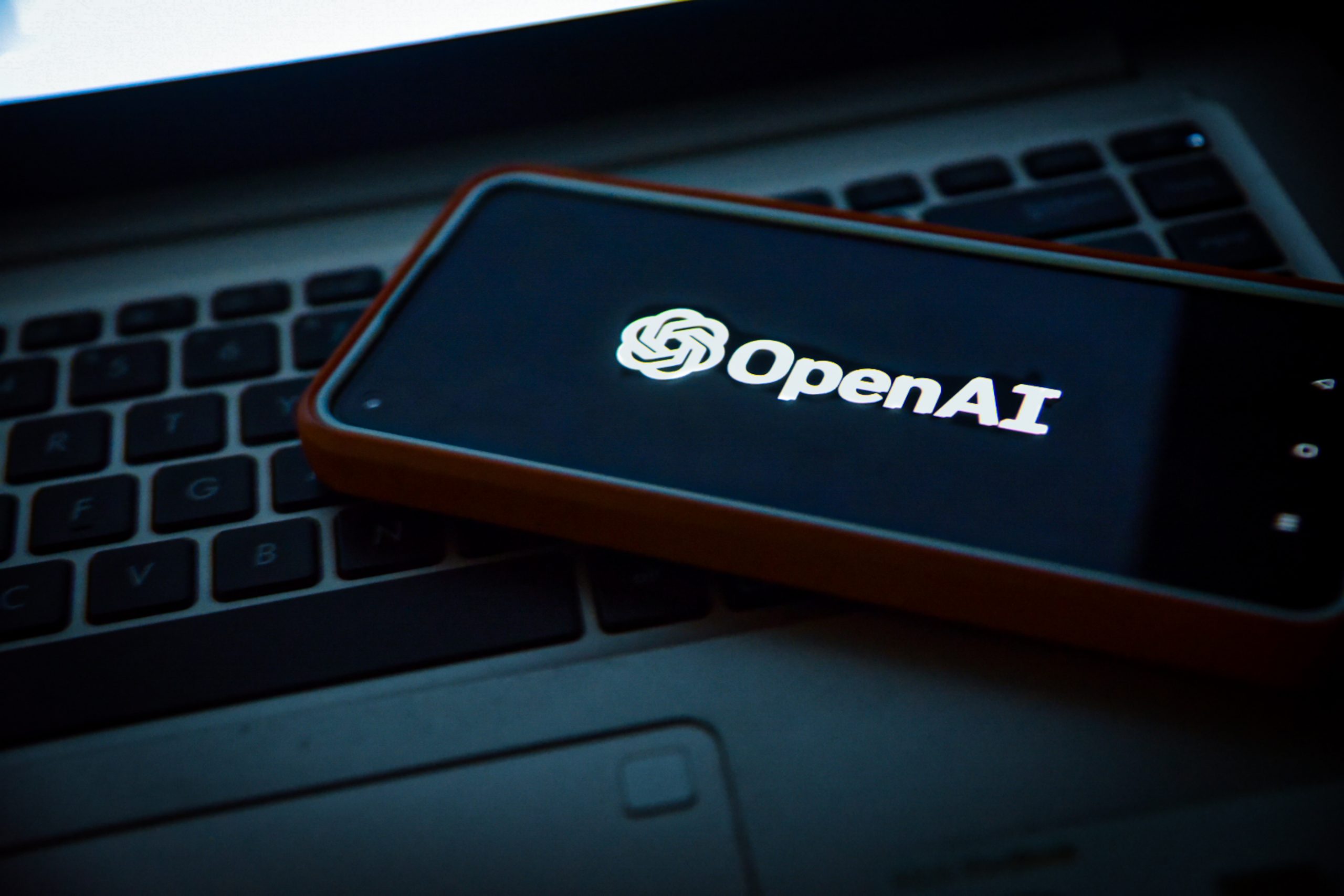Artificial Intelligence (AI) has revolutionized the world of technology, providing endless possibilities for apps across various industries. Whether you’re a startup founder, CTO, or CEO, choosing the right AI model for your app can make all the difference in the success of your venture. With so many options available, it can be overwhelming to determine which AI model will best suit your needs. In this article, we will guide you through the process of selecting the perfect AI model, ensuring that you make an informed decision that propels your application to new heights.
The Basics of AI Models
Before diving into the selection process, it’s crucial to grasp the fundamentals of AI models. At its core, AI involves the creation of intelligent machines capable of mimicking human cognitive functions. Whether it’s natural language processing, computer vision, or predictive analytics, AI models are built to solve specific tasks. Understanding these underlying principles will allow you to make informed decisions regarding your application’s requirements.
Artificial Intelligence (AI) has become a transformative technology in recent years, revolutionizing various industries. The concept of AI dates back to the 1950s when researchers began exploring ways to create machines that could simulate human intelligence. Today, AI has evolved into a powerful tool that can analyze vast amounts of data, recognize patterns, and make predictions.
One of the key aspects of AI models is their ability to learn from experience. Through a process called machine learning, these models can improve their performance over time by continuously analyzing data and adjusting their algorithms. This capability makes AI models highly adaptable and capable of handling complex tasks.
AI and Its Importance in Apps
AI encompasses a broad range of technologies that enable machines to learn from experience and perform human-like tasks. Its importance in apps cannot be overstated, as AI models can help automate processes, uncover valuable insights from data, and enhance user experiences. We at Wesoftyou have witnessed firsthand how AI-driven applications deliver remarkable results, catapulting businesses to the forefront of their industries.
AI has found applications in various fields, including healthcare, finance, manufacturing, and entertainment. In healthcare, AI models can assist in diagnosing diseases, analyzing medical images, and predicting patient outcomes. In finance, AI algorithms can analyze market trends, detect fraud, and optimize investment strategies. The possibilities are endless, and AI continues to push the boundaries of what is possible.
Types of AI Models
When choosing an AI model, it’s essential to understand the different types available. From traditional rule-based systems to advanced machine learning algorithms like Convolutional Neural Networks (CNN) and Recurrent Neural Networks (RNN), each model offers unique capabilities. Assessing the nature of your app will help you determine the most suitable AI model to achieve your desired outcomes.
Rule-based AI models rely on predefined rules and logic to make decisions. These models are suitable for tasks where the rules are well-defined and do not require learning from data. On the other hand, machine learning models, such as CNNs and RNNs, are designed to learn patterns and relationships from data. These models excel in tasks like image recognition, natural language processing, and speech synthesis.
Another type of AI model gaining popularity is the Generative Adversarial Network (GAN). GANs are composed of two neural networks: a generator and a discriminator. The generator creates new data samples, while the discriminator tries to distinguish between real and generated data. This interplay between the two networks leads to the generation of realistic and high-quality data.
Key Factors in AI Model Selection

Selecting the right AI model goes beyond understanding its technicalities. From our experience, we have identified several key factors that should guide your decision-making process. These include the availability and quality of training data, computational requirements, development time, and ongoing support. Evaluating these factors will ensure that the AI model chosen aligns with your application’s specific needs.
The availability and quality of training data are crucial for the success of an AI model. Sufficient and diverse data is needed to train the model effectively and ensure its generalizability. Additionally, the computational requirements of the model should be considered, as some models may require significant computational resources to train and deploy.
Development time is another important factor to consider. Some AI models may take longer to develop and fine-tune, depending on their complexity and the availability of resources. It’s essential to assess your project timeline and allocate resources accordingly.
Lastly, ongoing support is vital for the long-term success of an AI model. As technology evolves and new challenges arise, having access to support and updates from the model’s developers can make a significant difference. Regular updates and improvements can ensure that your AI model remains effective and up-to-date.
In conclusion, understanding the basics of AI models is essential for making informed decisions during the selection process. AI has become a powerful tool with numerous apps across various industries. By understanding the different types of AI models and considering key factors in the selection process, you can ensure that your application benefits from the transformative capabilities of AI.
Assessing Your App Needs
Now that you have a solid understanding of AI models, it’s time to assess your application’s needs to determine which model will serve you best.
When it comes to AI models, there is no one-size-fits-all solution. Each application has unique requirements and goals. By carefully evaluating your application’s needs, you can make an informed decision that aligns with your objectives.
Application’s Purpose
Begin by clearly defining the purpose of your app. Are you aiming to automate a specific task, provide personalized recommendations, or enhance user interactions? Understanding your application’s purpose will help narrow down the AI models that are most suitable for your goals.
For example, if your app is focused on automating customer support, you may need a natural language processing (NLP) model that can understand and respond to user queries. On the other hand, if your goal is to provide personalized product recommendations, a recommendation system powered by machine learning algorithms might be the right choice.
Data Requirements Analysis
AI models thrive on data. Analyzing your application’s data requirements is crucial in determining the feasibility of different AI models. Consider the size, quality, and structure of your data. Do you have labeled training data for supervised learning, or can you rely on unsupervised learning techniques? By understanding your data requirements, you can select AI models that are compatible with the data you have available.
For instance, if you have a large dataset with labeled examples, you can leverage supervised learning algorithms to train a model that can classify new instances accurately. On the other hand, if you have unstructured data, such as text or images, unsupervised learning techniques like clustering or dimensionality reduction can help you uncover patterns and insights.
Considering Your App’s Scale
Scalability is a critical aspect when choosing an AI model. Will your application handle a large number of users or process vast amounts of data in real-time? Some AI models may be better suited for small-scale apps, while others offer the necessary robustness to handle enterprise-level demands. We at Wesoftyou can provide valuable insights on the scalability aspects of different AI models based on our extensive experience in software development.
It’s important to consider the computational resources required to deploy and maintain the AI model. Some models may require significant computing power and memory, which can impact the overall performance and cost-effectiveness of your application. By carefully evaluating the scalability aspects, you can ensure that your chosen AI model can meet the demands of your app now and in the future.
In conclusion, assessing your application’s needs is a crucial step in the AI model selection process. By identifying your app’s purpose, analyzing your data requirements, and considering the scalability aspects, you can make an informed decision that maximizes the potential of your application. At Wesoftyou, we are committed to helping you navigate the complex landscape of AI models and find the perfect fit for your unique requirements.
Evaluating AI Models
Once you have a clear understanding of your app’s needs, it’s crucial to evaluate different AI models before making a final decision.
When evaluating AI models, there are several factors to consider that go beyond just their accuracy. These factors can help you determine which model is the best fit for your specific application and requirements.
Understanding Model Accuracy
Model accuracy is a fundamental metric to consider. How well does the AI model perform in terms of correctly predicting outcomes? Assessing the accuracy of different models will help you select the AI model that achieves the desired level of precision for your app.
However, accuracy alone may not be sufficient to evaluate the overall performance of an AI model. It’s important to consider other metrics such as precision, recall, and F1 score to get a comprehensive understanding of its predictive capabilities.
Furthermore, it’s essential to evaluate the model’s performance across different datasets and in real-world scenarios. A model that performs well on one dataset may not generalize well to unseen data. Therefore, conducting thorough testing and validation is crucial to ensure the model’s reliability and robustness.
Considering Model Complexity
Another factor to consider is the complexity of the AI model. Complex models may provide higher accuracy but require more computational resources during training and inference. Balancing model complexity with your infrastructure capabilities is vital to ensuring optimal performance and scalability.
Complex models often have a larger number of parameters, which can lead to longer training times and increased memory requirements. Additionally, deploying complex models on resource-constrained devices or in real-time applications may pose challenges due to their computational demands.
On the other hand, simpler models may have lower accuracy but can be more computationally efficient and easier to interpret. Depending on your specific use case, a simpler model might be a better choice if interpretability and speed are more important than achieving the highest possible accuracy.
Assessing Model Training Time
Training an AI model can be time-consuming, especially for larger datasets and complex architectures. Assess the training time required for each AI model you’re considering to make an informed decision about development timelines and resource allocation.
Training time depends on various factors, including the size of the dataset, the complexity of the model, and the available computational resources. Deep learning models with millions of parameters often require significant computational power and time to train, whereas simpler models can be trained relatively quickly.
It’s important to consider the trade-off between training time and model performance. A model that takes a long time to train may not always yield significantly better results compared to a faster training model. Therefore, it’s crucial to strike a balance between training time and the desired level of accuracy for your app.
Furthermore, techniques such as transfer learning and pre-trained models can help reduce training time by leveraging knowledge learned from previously trained models. This can be particularly beneficial when working with limited computational resources or when time is a critical factor.
By considering factors beyond just accuracy, such as model complexity and training time, you can make a more informed decision when evaluating AI models. Remember to thoroughly test and validate the models to ensure their reliability and suitability for your specific application.
AI Model Implementation
With the AI model selected, it’s time to implement it into your app and unleash its full potential.
But how exactly do you go about integrating this powerful AI model into your application? Let’s dive into the process and explore the steps involved.
Integration of the AI Model into Your App
Integrating an AI model involves leveraging APIs, SDKs, or custom code to seamlessly incorporate the model’s functionalities into your application’s architecture. This integration process requires careful planning and collaboration with experienced developers who specialize in AI implementation.
One option is to utilize APIs provided by the AI model’s developers. These APIs allow you to interact with the model and access its capabilities without having to build everything from scratch. By following the documentation and guidelines provided, you can integrate the AI model into your application quickly and efficiently.
Another approach is to use software development kits (SDKs) specifically designed for AI integration. These SDKs provide pre-built components and tools that simplify the integration process. With the help of SDKs, you can save time and effort by utilizing pre-existing code and functionalities.
For those who prefer more flexibility and customization, building custom code to integrate the AI model is also an option. This approach allows you to tailor the integration to your specific requirements and make any necessary modifications to suit your application’s architecture.
Regardless of the integration method chosen, collaborating with experienced developers, like those at Wesoftyou, ensures a smooth integration process that maximizes the model’s effectiveness. Their expertise and knowledge in AI implementation can help you navigate any challenges that may arise during the integration process.
Monitoring and Updating Your AI Model
Now that the AI model is integrated into your application, it’s important to monitor its performance and continuously update it to ensure optimal results.
AI models thrive on continuous improvement. Regularly monitoring the model’s performance and updating it using new data enhances its accuracy and relevance. By analyzing the model’s output and comparing it to expected results, you can identify areas for improvement and fine-tune the model accordingly.
Building mechanisms to track user feedback and collect new data will enable you to refine and improve your AI model over time. User feedback provides valuable insights into how well the model is performing and where it may need adjustments. Collecting new data allows you to train the model with a more diverse and up-to-date dataset, improving its overall performance.
It’s important to establish a feedback loop with your users to gather their thoughts and opinions on the AI model’s performance. This feedback can be collected through surveys, user interviews, or even by analyzing user behavior within your application. By actively seeking feedback, you can ensure that your AI model continues to meet the needs and expectations of your users.
Ensuring User-Friendly AI Implementation
While the technical aspects of AI implementation are crucial, user experience should always be at the forefront of your strategy.
Ensuring that the AI model seamlessly integrates with your application’s interface and interacts intuitively with users enhances adoption and satisfaction. The AI model should feel like a natural extension of your application, providing valuable insights and assistance without disrupting the user experience.
Conducting user testing and soliciting feedback will allow you to refine the implementation further. By observing how users interact with the AI features and gathering their feedback, you can identify any pain points or areas for improvement. This iterative process of user testing and refinement will help you create a user-friendly AI implementation that meets the needs and expectations of your target audience.
Remember, successful AI implementation is not just about the technology itself, but also about how well it integrates with your app and how effectively it serves your users. By following best practices and incorporating user feedback, you can ensure a seamless and user-friendly AI implementation that maximizes the potential of your chosen AI model.
Trends in AI Models for Apps

As technology continues to evolve, so do AI models. Stay ahead of the curve by keeping an eye on emerging trends that can shape the future of your app.
Artificial Intelligence (AI) has become an integral part of our lives, revolutionizing various industries and sectors. From healthcare to finance, AI has proven to be a game-changer, enabling businesses to automate processes, make data-driven decisions, and provide personalized experiences to their customers. However, the field of AI is constantly evolving, with new advancements and trends emerging regularly.
One of the predicted developments in AI technology is explainable AI. As AI models become more complex, it is crucial to understand how they arrive at their decisions. Explainable AI aims to provide transparency and interpretability, allowing users to understand the reasoning behind AI-generated outputs. This development will not only enhance trust in AI systems but also enable businesses to comply with regulatory requirements.
Another exciting trend is reinforcement learning, a type of machine learning where an AI agent learns to make decisions by interacting with its environment. This approach has shown great potential in areas such as robotics and gaming, where AI systems can learn complex tasks through trial and error. By incorporating reinforcement learning into your app, you can create intelligent systems that continuously improve and adapt to changing circumstances.
Generative AI is also on the horizon, offering the ability to generate new content, such as images, music, and text, that closely resembles human-created content. This technology has the potential to revolutionize creative industries, enabling artists and designers to explore new possibilities and push the boundaries of their craft. By leveraging generative AI models, your application can offer unique and personalized experiences to users.
Predicted Developments in AI Technology
Advancements like explainable AI, reinforcement learning, and generative AI are on the horizon, and understanding these developments will give you a competitive edge in the market. We at Wesoftyou are continuously exploring these emerging technologies to deliver innovative solutions to our clients.
At Wesoftyou, we understand the importance of staying up-to-date with the latest AI trends. Our team of experts is constantly researching and experimenting with new AI models and techniques to ensure that we provide cutting-edge solutions to our clients. By partnering with us, you can benefit from our deep knowledge and expertise in AI technology.
Preparing Your App for Future AI Innovations
Preparing your application for future AI innovations involves building adaptable architectures and data pipelines. Ensure that your codebase and infrastructure can seamlessly accommodate future AI models, keeping your application at the cutting edge of AI technology.
Adaptable architectures are essential for incorporating new AI models into your application. By designing modular and scalable systems, you can easily integrate and replace AI components as new advancements emerge. This flexibility will allow your application to evolve with the rapidly changing AI landscape.
Data pipelines play a crucial role in AI applications, as they enable the collection, preprocessing, and transformation of data. To prepare your application for future AI innovations, it is important to build robust and scalable data pipelines that can handle large volumes of data. Additionally, implementing data governance practices will ensure the quality and reliability of your data, enabling accurate and meaningful AI insights.
Choosing the right AI model for your application is a critical step towards success. With the guidance provided in this article, you can make informed decisions that align with your application’s needs and goals. Remember, at Wesoftyou, we specialize in software development and have a proven track record of helping businesses leverage AI to their advantage. Contact us for a free consultation or project estimation, and let us help you navigate the exciting world of AI models for applications.
As the field of AI continues to evolve, it is essential to stay updated with the latest trends and advancements. By embracing emerging technologies like explainable AI, reinforcement learning, and generative AI, you can unlock new possibilities for your application. With the right preparation and the support of experienced professionals, you can position your application at the forefront of AI innovation and gain a competitive edge in the market.
Conclusion
FAQ
AI models are diverse and cater to specific tasks. Rule-Based Systems follow predefined logic, while Machine Learning Models like CNNs and RNNs excel in tasks such as image recognition and sequence analysis. GANs generate realistic data, Transformers like BERT aid in natural language understanding, and Autoencoders learn efficient data representations. The choice of model depends on the specific requirements and characteristics of the task at hand.
When selecting an AI model, factors such as your application’s purpose, data requirements, and scalability must be considered. Additionally, consider the accuracy and complexity of the model, as well as the training time required.
Future trends in AI models include developments in explainable AI, reinforcement learning, and generative AI. It is essential to stay aware of these emerging technologies to leverage them for your application’s future success.
To ensure a user-friendly AI implementation, focus on integrating the model seamlessly into your application’s interface and prioritize user feedback and testing to refine the implementation further.
For a free consultation or project estimation, contact us at WeSoftYou today!





















